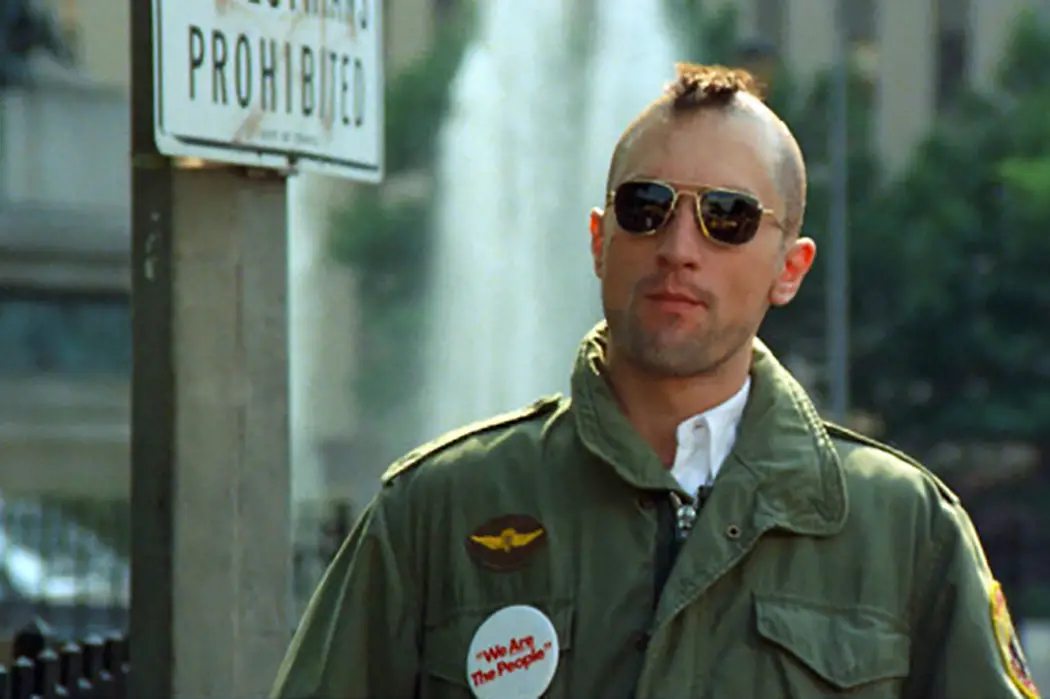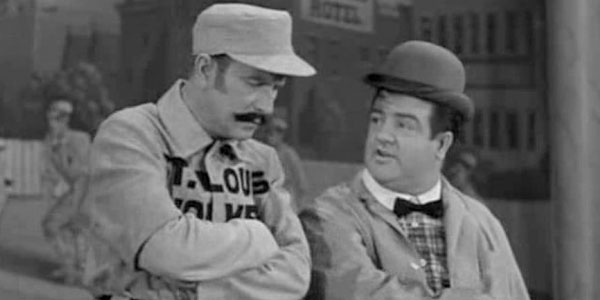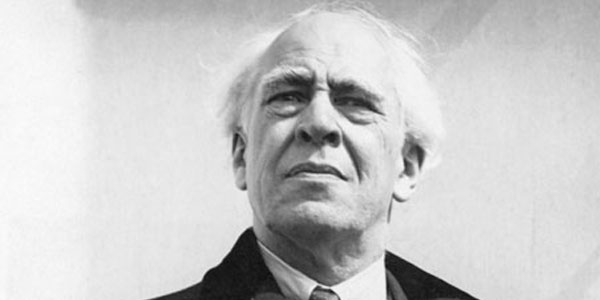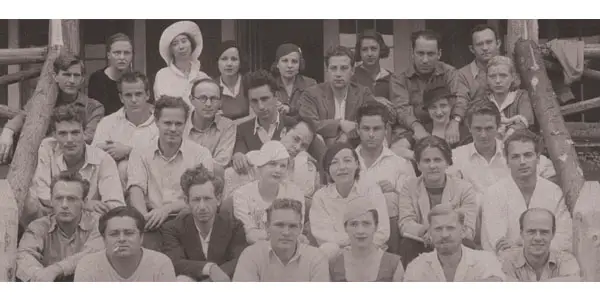Going Method: A History Of The Modern Acting Techniques

Michelle Sabato is an actor and writer from Cleveland, Ohio.…
When I was a child I used to watch a lot of black & white films. My grandfather used to make me watch them and then quiz me afterward to make sure I was paying attention; but I loved them, so I was paying attention. Watching Abbott & Costello, Chaplin, Wallace Berry, I noted as a young girl how the acting seemed “off” in comparison to modern day films.
Being from Cleveland, I would go to Playhouse Square for a performance and history lesson. I learned that people like Abbott & Costello would often travel through Cleveland in their vaudeville days, because it was directly in the middle of New York and Chicago. So, that’s why they act different, I thought; it’s because they are theatre guys. But that was only one part of the equation. As I grew up and started learning about the actual study of acting, a lot of questions I had were beginning to be answered.

Think of theatre for a moment. As an actor, you must project your voice and make extenuating gestures to be seen and heard. And where did the first film actors come from? Theatre. So, the actor had to learn to scale their performance down from the stage to the screen. But, there was also an acting revolution that was happening at this time, and that was what we loosely refer to as “method acting”.
The Method Begins
Konstantin Stanislavski was a Russian character actor and director who began a process for his own acting career and when he directed. His method involved delving into the script, analyzing the actions and words and putting the focus on the inner action of the actor. This all seems par for the course, but it wasn’t the case at the time. No longer was an actor just saying lines and giving a performance, the actor was now asking themselves “why am I saying this? What is my motivation?”.

Stanislavski laid out a detailed format of the rehearsal process, how to get into the psyche of the character, and how to use your body to get to the truth. He would then go on to start the Moscow Art Theatre (MAT) and create lasting relationships with playwright Anton Chekov. The MAT traveled the world and made a stop in the United States in the 1920s. By the 1930s, a group of American actors and playwrights formed a group which adopted a lot of Stanislavski’s principles. The Group Theater was founded in 1931 and would only go on to last a decade, but the remnants of this group still have a lasting impact to this day.
The Method Becomes Americanized
There were many members of the Group Theater, but the three that stand out went on to change the American acting landscape. Lee Strasberg, Stella Adler and Sanford Meisner have created acting techniques that are followed to this day. The problem with the Group Theater is that they all had different ideas of how to capture a great performance. The basis for all the methods is truthfulness, which hearkens back to Stanislavski’s push for realism. But here are how the three teachers and their techniques differ:
Lee Strasberg, best known for running The Actors Studio, coined his acting technique “The Method”. You have to literally become your character. It’s the experiencing, or re-experiencing, of emotions within the fiction of the story. You must go through the motions as the character does. Strasberg also believed in a technique called “sense memory”, where the actor relives an emotion or event to get them to a moment of truth. For instance, if your character is attending a funeral for a loved one, you as the actor should recall a time in your life where you went through similar trauma. By re-experiencing this emotion you are able to give a truthful and accurate performance. Famous students include: James Dean, Ellen Burstyn and Al Pacino.
Stella Adler, not unlike Strasberg, believed that you had to inhabit your character’s experience. But she was opposed to sense memory. She believed that your emotional truth should come from the physical aspect of the character. If your character is a dancer, then the actor needs to learn to dance. The physicality will bring you to the emotional truth. Adler’s method also relied heavily on the playwright and the world that he or she created for the actors. Acting was more than just the words on a page, but the playwright gives you, the actor, the world and it is up to you to bring it to life. Famous students include: Marlon Brando, Elaine Stritch, Robert De Niro.
Sanford Meisner’s method is the one that I have studied intensely for over five years. Meisner’s philosophy was “acting is behaving truthfully under imaginary circumstances”. The art of acting comes from the doing, that there is an objective in each and every scene. This approach puts a lot on the imagination of the actor to create a truthful experience; but unlike sense memory, you do not use your own real life experiences. You create an “as if”, to protect you emotionally from reliving real life trauma.
So, let’s use the same scenario of an actor having to attend the funeral of a loved one. With the Meisner technique, I would daydream of a scenario similar to this, where I go through the experience of having to attend the funeral of my mother, let’s say. I daydream of walking into the funeral home, seeing her in the casket for the first time. Because my mother is still alive in real life, I am only imagining these circumstances to bring out sorrow for the scene and not using real life trauma that might harm me as a human being. Famous students include: Robert Duvall, Diane Keaton, Jeff Goldblum.
Modern Methods
To this day there are loyal followers of Strasberg, Adler and Meisner. But like anything, things can change with time. There have been new methods and approaches to acting that pay homage to these three pioneers, but also have their own twist. For instance, David Mamet and William H. Macy created “Practical Aesthetics”. Both had studied Meisner and used his teachings as a basis for their new approach. Meisner used to say “the action is in the doing”, so Mamet and Macy fleshed that out and pressed their actors to focus on what is happening in the scene, what is the character doing, and what is it that the characters desire.
Another notable acting instructor is Uta Hagen. Hagen created a method that was a mixture of the three aforementioned methods and used sense memory, improvisation, body work and daydreaming. Hagen received her inspiration from director Harold Clurman, who was also a member of the original Group Theater. While the three different methods spawned these offshoots, one thing is abundantly clear: all roads to modern acting lead back to Stanislavski.
Conclusion
Acting is not mathematical, as there will never be a proper equation that can be perfected. But with the help of these creators, it can be concluded that acting is an emotional science that has evolved through the years. By really delving into the psyche of a character, an actor can move their work past a mere performance and into a genuine experience.
The methods mentioned above were pushing actors, playwrights and creatives toward realism. Sure, it’s great to be entertained by a performance, but it’s equally important to see real life reflected.
As an audience, have you noticed the changes in acting as the methods have formed? Are the performances of method actors more compelling or was I the only child weirdo noticing the differences and having an existential crisis?
Does content like this matter to you?
Become a Member and support film journalism. Unlock access to all of Film Inquiry`s great articles. Join a community of like-minded readers who are passionate about cinema - get access to our private members Network, give back to independent filmmakers, and more.
Michelle Sabato is an actor and writer from Cleveland, Ohio. By the age of 2 Michelle had memorized all the words to The Wizard of Oz. So, yes, she can carry a conversation with just using movie quotes.













